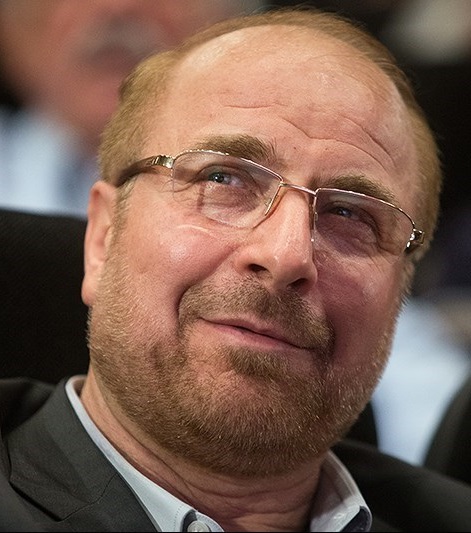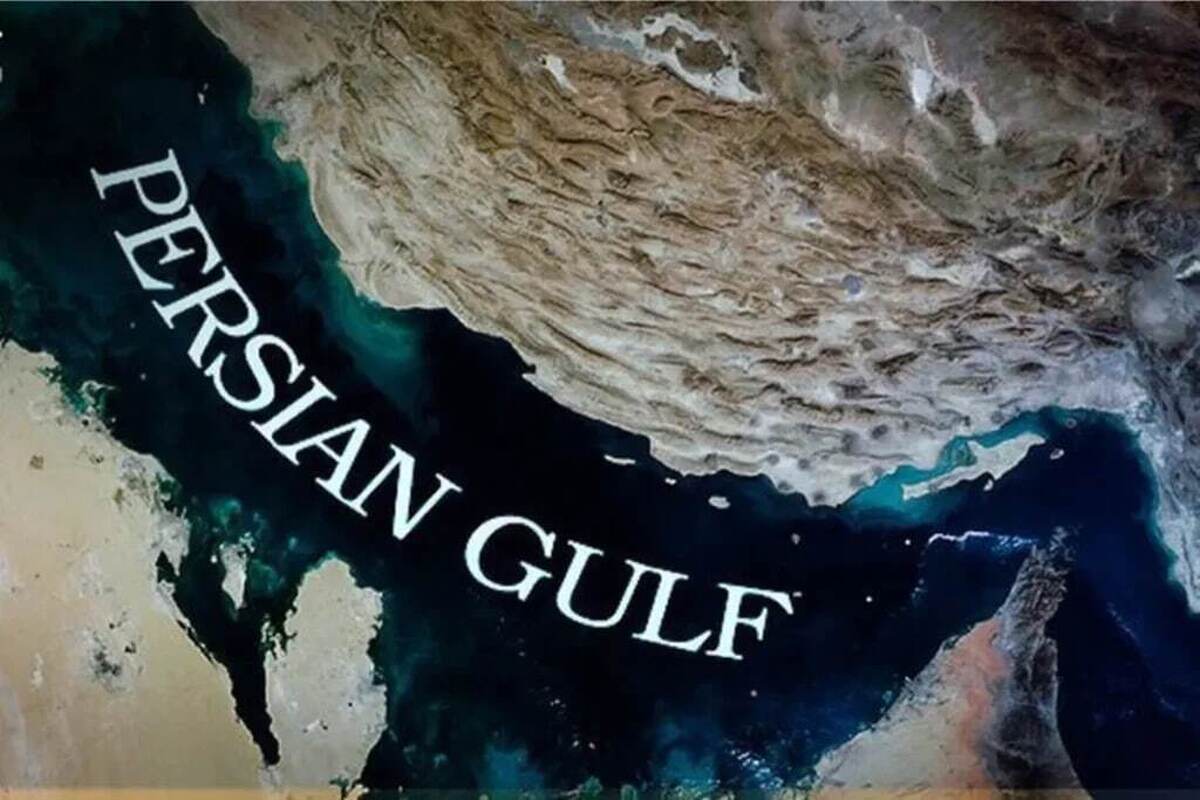
The new man of power in Iran’s parliament
IranSource by Arash Azizi
According to an old dictum, the best leaders are those who don’t ask for the job. By such logic, Mohammad Baqer Qalibaf, the fifty-eight-year-old who became the new speaker of the Iranian parliament on May 28, is not very qualified. The conservative soldier-cum-politician has never hidden his ambitions for power. His ascendancy to the top legislative position in the country comes after three failed runs for the presidency in 2005, 2013, and 2017.
In the complex structures of the Islamic Republic, the vast majority of power is constitutionally bestowed upon the country’s Supreme Leader, which is currently Ayatollah Ali Khamenei, who is also the commander-in-chief and whose appointees vet candidates for all elections except those for local councils. But the three men heading the legislative, judicial, and executive branches of the government still wield much power. The speaker of the parliament is a major political figure who controls his own budget and institutions and has his own diplomatic profile. The wily Qalibaf is expected to use his position even more forcefully than his predecessors and to usher in a transition away from the failed pro-reform presidency of Hassan Rouhani to a new conservative and hardline-dominated era for the Islamic Republic.
Qalibaf’s rise to power has had very little democratic legitimacy. He was picked by 230 out of 290 members of parliament (MPs)—a majority of whom are conservatives—in Iran’s most uncompetitive elections in years, with an abysmal turnout of 42.57 percent—the lowest since 1979. For the first time in a long time, the parliament’s conservative majority was a done deal before the voting even took place. With Qalibaf’s ascendancy, many Iranians pointed to the bitter irony that the two big losers of the 2017 presidential elections, Qalibaf and cleric Ebrahim Raisi—who was appointed by Khamenei to head the judiciary in 2019—now headed two powerful branches of the government. Losing elections seemed to be the quickest way to the top in the Islamic Republic, many joked.
A revolutionary soldier becomes a technocrat
The massive military and economic might of the Islamic Revolutionary Guards Corps (IRGC), the mammoth militia that acts as a praetorian guard for the Supreme Leader, is the stuff of legend in analyses of Iran. What is often missed by many observers is the fact that the presence of IRGC commanders have been rare in key political positions. The IRGC built itself up as a zealot revolutionary army throughout the long years of the bloody 1980-88 war with Saddam Hussein’s Iraq. But, following the war, Iran saw the reconstruction period under President Akbar Hashemi Rafsanjani and the reformist period that shook Iran to its foundations after the 1997 youth-led landslide election of President Mohammad Khatami. The wartime IRGC leaders often saw themselves as political losers in these years. The epitome of this political misfortune is the case of Mohsen Rezaei, the IRGC’s top commander from 1981 to 1997. Not only has he lost all his presidential runs by long shots in 2005, 2009, and 2013, but he couldn’t even win a single seat in parliament in 1999. As the pro-reform Iran of post-1997 seemed to leave its wartime commanders behind, they developed a grudge and a brand of reactionary politics that is familiar to veterans in other contexts, such as the post-Vietnam War era in the United States.
Qalibaf belongs to the same generation of IRGC veterans. He best showed his espousal of veteran grudge politics in a presidential debate in 2013, when he told the fellow conservative candidate Ali Akbar Velayati, Iran’s foreign minister during the war years: “When you were having coffee with [French President François] Mitterrand in Paris, we were hit by his Dassault Mirage missiles on the battlefronts.”
Born in 1961, Qalibaf joined the IRGC in 1980 at the outset of the war with Iraq—one of the many who rose in the ranks while spending their twenties on the battlefront. He became a brigade commander in 1982 and a divisional one a year later. His division was made up of youth from his home province of Khorasan, just as those of a fellow commander, Qasem Soleimani, were made up of his home province of Kerman. The two men were close comrades. In 1999, they co-signed a letter to President Khatami asking him to crackdown on the pro-democracy student protests before the commanders “lost their patience.” Qalibaf later boasted about personally beating up students on the streets. In 2006, the two were seen hugging each other and earnestly sobbing together at the funeral of Ahmad Kazemi, another IRGC wartime commander in their own mold.
But, while, Soleimani stayed in the IRGC until his assassination by the US in January, Qalibaf has spent two decades in political entrepreneurship. For broadenings his perspectives, he got an MA and a PhD in political geography from two of Iran’s best universities: University of Tehran and Tarbiat Modares University (he continues to serve as faculty in both places). Following stints as heads of an engineering behemoth of the IRGC (1994-1997) and its air force (1997-2000), he became a modernizing national police chief in 2000. In the height of the reformist years, when Iran was seeing unprecedented openness, Qalibaf used the police as a battering ram against pro-democracy students and intellectuals. In 2005, he expected to become the conservative successor to Khatami as president but, unexpectedly, lost to a little-known young maverick, Mahmoud Ahmadinejad.
In the age of reformism, Qalibaf had tried to distance himself from the gruff military image associated with IRGC commanders. He compared himself to Reza Shah, the popular autocratic monarch who founded the Pahlavi dynasty in 1925 and boasted his skills as a pilot who had flown Airbus airliners. In a much-mocked ad, he posed with the Western-style pilot uniform in lieu of the IRGC khakis. Ironically, this seemed to backfire, as he didn’t convince the reformists to vote for him but also lost the conservatives to Ahmadinejad due to the latter’s unapologetically pro-regime campaign. Qalibaf then replaced Ahmadinejad as mayor of the capital Tehran, a position the former held for twelve years until he resigned in 2017 to stage another unsuccessful presidential campaign.
In all of his post-war positions, Qalibaf has shown a penchant for a certain style of authoritarian technocratic governance. His repressive reign as police chief also brought along a more professional 911-style phone system, known as 110 in Iran. His years as mayor were infamously corrupt but also led to the modernization of Tehran’s infrastructure by building highways, tunnels, and a lauded busway (BRT) system.
“He says all the right words about the revolution but, at heart, he is a military man who loves to build things and doesn’t care much about ideology,” a close associate of Qalibaf told this author. “For example, he is very interested in how the Israeli army leads construction projects, there, and has closely studied some of their plans.”
Second Phase
In his opening speech on May 31, Qalibaf made clear his intention of running a parliament in line with Khamenei’s desired ‘Second Phase’ of the revolution. As declared by the leader in 2019, this phase is to be led by “young and devout revolutionaries;” i.e. a new generation of hardline leadership.
Qalibaf started with the empty claim that Iran’s Islamic Revolution is now “the most important rival model vis-a-vis the global capitalist system.” He went on to stress a hardline foreign policy including “support for Lebanon’s Hezbollah, Hamas, Palestinian Islamic Jihad, the oppressed people of Yemen and the Iraqi people, government and the Shia clerical leadership.” He rejected “any negotiation or compromise with the US, the center of global arrogance,” as being “fruitless and harmful.”
“Our strategy in countering the terrorist US is to complete the chain of revenge for the blood of martyr Soleimani,” Qalibaf said. “What we started by our attack on al-Assad Base [in January]… we will end by full expulsion of the terrorist US army from the region.”
While this shows a determination for continuity in foreign policy, Iran’s actual conduct has never been limited to loud words in speeches but has often included shrewd backroom deals. Qalibaf’s technocratic tendency means he’d be ever more open to such workings, especially, if he was to assume more power in the coming years.
In the maiden speech, Qalibaf also made clear his desire for a “people-based economy” which is regime-speak for the continuation of the Khamenei-backed policy of capitalist privatization—the government should only have a marginal role in such an economy, he stressed.
The ambitious soldier-cum-technocrat wishes to play a key role in the next chapter of Iran’s history. Facing mass discontent from the populace, a miserably failed economy, and hostile US policy, Qalibaf and the coming president, almost certainly a fellow conservative, will have difficult days ahead.
Arash Azizi is a writer and scholar based at New York University. He is the author of the upcoming book, “The Shadow Commander: Soleimani, the US and Iran’s Global Ambitions” which will be published by Oneworld Publications in November. Follow him on Twitter: @arash_tehran.



